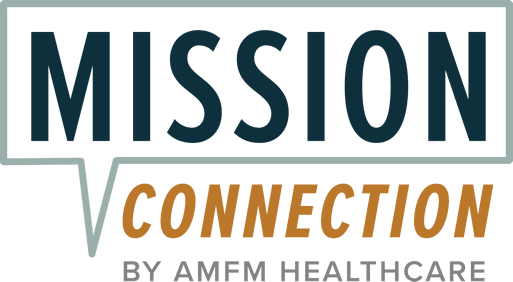
Key Takeaways
- The Trauma Symptom Checklist for Adults is a tool that assesses symptoms related to traumatic experiences.
- The checklist includes measures for anxiety, depression, and dissociation.
- Self-assessment is a critical step toward understanding and managing trauma.
- Seeking professional help is recommended if the checklist indicates severe symptoms.
- Mission Connection’s trauma treatment process includes comprehensive assessment, personalized therapy plans, trauma education, emotional support, and resilience-building strategies delivered by experienced professionals.
Understanding Trauma Symptoms
Trauma symptoms can manifest in numerous ways, both physically and emotionally. Common symptoms include anxiety, depression, and emotional numbness. Some people might experience flashbacks, nightmares, or intrusive thoughts related to the traumatic event. Acknowledge these symptoms as they can significantly affect daily life and overall well-being.
Besides emotional symptoms, trauma can also lead to physical issues such as headaches, fatigue, and changes in appetite. Understanding these signs can help individuals identify when they might need to seek professional assistance.
Impact of Trauma
Trauma impacts individuals differently, often influencing their thoughts, emotions, and behaviors. The effects can be long-lasting, affecting personal relationships, work, and daily activities. For some, trauma might lead to post-traumatic stress disorder (PTSD), a condition characterized by severe anxiety and distress.
PTSD can result in difficulties with concentration, memory, and emotional regulation. Address these symptoms early to prevent further complications.
Mission Connection offers flexible outpatient care for adults needing more than weekly therapy. Our in-person and telehealth programs include individual, group, and experiential therapy, along with psychiatric care and medication management.
We treat anxiety, depression, trauma, and bipolar disorder using evidence-based approaches like CBT, DBT, mindfulness, and trauma-focused therapies. Designed to fit into daily life, our services provide consistent support without requiring residential care.
Trauma Symptom Checklist for Adults
The Trauma Symptom Checklist for Adults also known as TSC-40 is a comprehensive tool designed to assess symptoms associated with traumatic experiences. It helps individuals identify specific symptoms and understand their severity.
What the Checklist Measures
The checklist measures a range of symptoms such as anxiety, depression, dissociation, and sleep disturbances. It also evaluates sexual problems and trauma-related issues.
Using the TSC-40 involves rating the frequency of each symptom over a specified period. This process provides a comprehensive overview of how trauma is affecting an individual’s life, allowing for targeted interventions and support.
How to Use the TSC-40
Using the TSC-40 is a straightforward process, but it requires careful attention to detail. The checklist consists of 40 questions that you will answer based on how often you’ve experienced each symptom in the past two months.
The answers range from “never” to “often,” and each response is assigned a numerical value. This approach helps quantify the frequency and severity of symptoms, providing a clear picture of your current mental health status.
Interpreting TSC-40 Scores
| Score Range | Interpretation |
| 0-20 | Minimal or no symptoms |
| 21-40 | Mild symptoms |
| 41-60 | Moderate symptoms |
| 61-80 | Severe symptoms |
| 81-120 | Very severe symptoms |
Once you have completed the checklist, add up the scores to get a total. This total will help you understand the severity of your symptoms. A higher score indicates more severe symptoms and a greater need for intervention.
For example, if your score falls between 41 and 60, you may be experiencing moderate symptoms that could benefit from professional support. On the other hand, a score above 80 suggests very severe symptoms, indicating an urgent need for professional help.

Other Variations of the TSC-40
The variations of the TSC-40 have been introduced over time to focus on specific populations and symptoms.
For instance, there is a shortened version known as the TSC-33, which streamlines the assessment process while maintaining accuracy. This version is particularly useful in settings where time is limited or when a quick screening is necessary. Despite being shorter, it still provides valuable insights into an individual’s mental health.
Another version is made specifically for children and adolescents, acknowledging that younger individuals may express and experience trauma differently from adults. By adapting the language and focus, this version ensures that younger populations receive appropriate assessments and care.
When to Seek Professional Help

Mental health professionals can provide guidance, support, and trauma-focused treatment options customized to individual needs. They can also help interpret the checklist results more comprehensively.
Benefits of Early Detection
Preventing Symptom Progression
By identifying symptoms early, individuals can take steps to prevent their progression. This might involve seeking therapy, engaging in self-care practices, or joining support groups. Early intervention can halt the development of more severe conditions like PTSD, reducing the overall impact of trauma on an individual’s life.
Improving Quality of Life
Addressing trauma symptoms can lead to significant improvements in quality of life. Individuals often find that they can better manage their emotions, improve their relationships, and engage more fully in daily activities. The checklist provides a pathway to understanding and healing, ultimately leading to a more fulfilling life.
Mission Connection: Your Partner in Trauma Recovery

When your checklist indicates the presence of trauma symptoms, our specialized trauma therapists are ready to provide the professional support you need. We offer evidence-based treatments including Eye Movement Desensitization and Reprocessing (EMDR), Cognitive Behavioral Therapy (CBT), and Trauma Focused therapy, all customized to your unique experiences and needs.
Through our accessible facilities in California, Virginia, and Washington, as well as our online treatment platform, you can receive the same quality care from the comfort of your own space. Don’t let trauma define your life any longer.
The path to healing starts with recognition and continues with proper treatment. Contact Mission Connection Healthcare today at 866-833-1822 to transform your trauma symptoms into stepping stones toward a healthier, more fulfilling life.
Call Today 866-833-1822.
Frequently Asked Questions (FAQ)
How often should I complete the checklist?
It’s advisable to complete the checklist whenever you feel that trauma symptoms are impacting your daily life. Regular assessments, such as every few months, can help monitor changes in symptoms and guide decisions about seeking further help.
Can this checklist diagnose PTSD?
No, the Trauma Symptom Checklist is not a diagnostic tool. It is designed to assess symptom severity and provide insights into how trauma affects you. A professional evaluation is necessary for an official diagnosis of PTSD.
Is the checklist suitable for teenagers?
The standard checklist is designed for adults, but there are versions customized for younger populations. These versions account for developmental differences and provide an appropriate assessment for teenagers and children.
What should I do if my score is high?
If your score indicates severe symptoms, seek professional help. A mental health professional can provide a more comprehensive evaluation and recommend appropriate treatment options. Early intervention can significantly improve outcomes and enhance well-being.
What approaches does Mission Connection Healthcare use in trauma treatment?
Mission Connection Healthcare uses evidence-based trauma therapies such as Eye Movement Desensitization and Reprocessing (EMDR), Cognitive Behavioral Therapy (CBT), and Trauma-Focused CBT (TF-CBT). Treatment begins with a comprehensive assessment and includes trauma education, emotional support, and resilience-building strategies.








